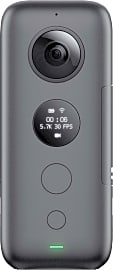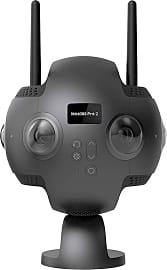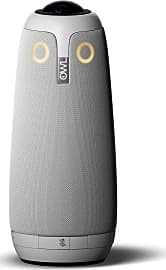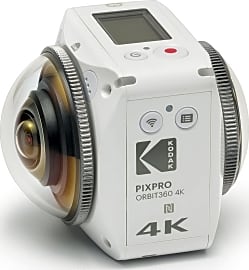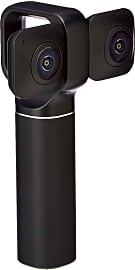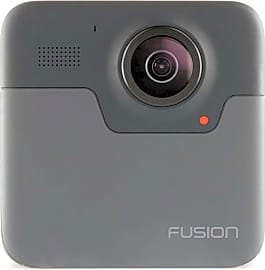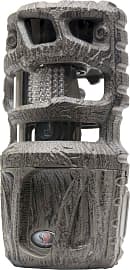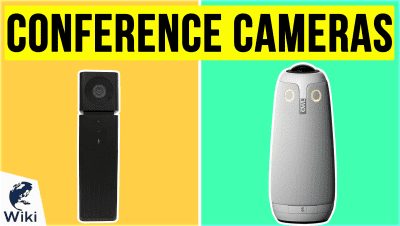The 10 Best 360 Degree Cameras

This wiki has been updated 33 times since it was first published in September of 2016. If you enjoy a good panoramic photograph, you'll really appreciate the total coverage of these 360-degree cameras. They can produce immersive videos and images that will give you thrilling immediate results and allow you to use your creativity to make what you capture even more impressive with your preferred editing software. Some also come with companion apps for live-streaming. When users buy our independently chosen editorial recommendations, we may earn commissions to help fund the Wiki.
Editor's Notes
February 02, 2021:
While the we ended up removing the Insta360 Nano S, due to availability issues, we decided to retain the Insta360 One X, but also added the Insta360 One R to our rankings — a step-up model that, while sharing some specifications and being a bit more expensive than the One X, purportedly produces better video quality, especially in low light, and comes standard with an IPX8, five-meter water resistance. By contrast, the One X requires a separately purchased case to achieve any level of water resistance.
We also eliminated the Xiaomi Mi Sphere, which was also suffering from some availability issues, and replaced it with the Kodak Orbit. Notably, we did notice some complaints attached to this option, especially pertaining to the user-friendliness of its software, but also observed quite a lot of high praise for it, and so judged that it might be worth including on our list, in the interest of including an affordable option for beginner hobbyists and users on a budget.
January 17, 2020:
This is a rather volatile sector, with startups and other companies throwing their hats in the ring without the means to necessarily stay in the game. The Giroptic iO HD on our previous list is a great example of this, as that company has gone out of business since we last reviewed it, and had to be removed. That said, experience in imaging doesn't guarantee a company's success in designing and marketing a 360-degree camera. There also has to be an incredibly intuitive and highly reliable application for editing and reviewing the footage, which can often be jarring and difficult to manipulate for newcomers to the style. That's why Nikon's Keymission 360, for example, remains an unmitigated failure that has yet to earn a spot on our list. I know for a fact that its specs are right up there with anything else, but its software can't compete with the intuitive design of a GoPro Max or an Insta360 One X.
Our last ranking focused exclusively on the most common form of this technology, which utilizes a pair of 180-lenses situated back to back to take in a total of 360 degrees around the camera body. These cameras either stitch the footage together internally or leave it up to the user to do so. In looking at the category as a whole, however, we found a few other offerings that reach outside this design to varying effects. The Meeting Owl Pro, for example, is a conference cam that can take in a whole room from its single lens, seeing ostensibly 360 degrees around without creating a borderline unwatchable video feed. And the Insta360 Pro 2 stitches the feeds from six lenses together, rather than two, limiting the distortion of each to create a more realistic environment for VR use.
How Can A Camera See 360 Degrees?
Most will stitch the two 180-degree images together internally, providing you with a 360-degree final product.
Some people have incredible special and situational awareness. You see it in sports all the time: a blind backhand pass in hockey, a quarterback avoiding what would have been a painful sack. Every time a miracle play like these occurs, you can rely on the announcers to make a certain observation: It’s like he’s got eyes in the back of his head.
If you did, in fact, have four eyes — the two you already have in addition to a pair facing backwards — you probably couldn’t quite see as well as the 360-degree cameras on our list. That’s because the human eye has about a 22-24mm focal length in camera terms. Our eyes’ cone of visual attention crops the edges of this field (we don’t constantly absorb information from our peripheral vision), so that our angle of view is only about 55 degrees.
With the same set of eyes in the back of our heads, that’s only a 110-degree angle of perception, less than a third of these 360-degree cameras.
So, what do they do differently? Well, for starters, it’s important to note that many of these cameras don’t shoot at a full 360 degrees. Many reach about 270-degrees, which still provides an incredible image. Make sure you pay close attention to the descriptions of each camera, so you don’t end up with a unit that can’t shoot as much as you want to capture.
One of the easiest ways to identify a camera that can likely shoot at the full 360 degrees is to count its lenses. A device with one lens probably doesn’t cover the breadth of 360 degrees. A camera outfitted with a pair of wide angle lenses facing opposite directions is much more apt to cover everything.
The focal length of the lenses on these dual-lens cameras is usually a little tighter than that of a single lens model. While a model with a single lens needs to get as close to 360 degrees as possible, each lens on a dual model only needs to capture a 180-degree field of view to get you to 360. That means you’re liable to experience less distortion while being able to see the entire field.
You may well wonder: if these dual-lens models effectively take two 180-degree pictures, where does the 360-degree image come from? Well, that depends on the camera. Most will stitch the two 180-degree images together internally, providing you with a 360-degree final product. Some may require that you do this yourself in software that the company can provide.
If you’re planning on using these images in any professional capacity, you might not care so much about whether the camera can stitch the image for you. Pros should ideally do this work on their computers, where the available processing power far exceeds what manufacturers can pack into these small camera bodies.
Practical And Impractical Uses For A 360 Degree Camera
Looking at the 360-degree sample images that manufacturers and reviewers provide, it may seem like finding a real-world use for these cameras could be more trouble than it’s worth. A lot of the images are difficult to decipher at first, and their global shape makes it very challenging to place yourself in the shoes of the shooter.
That’s all exciting, and very practical, but photography isn’t just about journalism.
One of the most powerful things photography can do is to transport you to another place or time, to let you see what others have seen. This is awfully subjective, of course, given that an image of a starving child in a third-world country can only do so much to convey that experience. But there is an undeniable range of visual angles with which we are, for now, very comfortable.
I say for now because that range of angles has been determined by the last 200 years of photographic experimentation and development, and it’s only been in the last few years that a new device has come along that’s guaranteed to change the way those viewing angles matter to us.
I’m talking about VR. VR headsets like the Oculus Rift and those of its competition can easily utilize 360-degree videography to provide users with a real-world visual experience.
The technology is enormous at the moment, but that’s mainly due to optical and display limitations that are sure to evaporate in the coming years. Advances in screen technology and the power sources that provide those screens with juice could very soon see us placing these little screens over our very eyes in the form of high-tech contact lenses. Looking around a 360-degree picture or video with that technology would require as little effort as you’re expending to read this text.
That’s all exciting, and very practical, but photography isn’t just about journalism. It’s also about art. You can use your 360-degree camera to capture some truly mind-bending images, many of which begin to take on as much impressionistic significance as they do practical.
A Brief History Of Panoramic Photography
If some of the images these 360-degree cameras can render look somewhat familiar to you (especially the individual 180-degree shots produced by one side of a dual-lens model), that’s because this type of photography has been around for almost as long as the art form itself.
While the popularity of panoramic photography never waned significantly, it did receive a huge boost with the advent of the GoPro camera.
Panoramic photography used to rely on a series of physical prints laid out next to one another after development. The photographer would take a picture, rotate his camera to the edge of that image’s frame, take another, and repeat. This could, eventually, encompass 360-degrees.
In 1898 and 1899 respectively, the Al-Vista camera and the Kodak Panoram hit the market. These cameras used a combination of wide angle lenses and longer film cells to produce panoramic shots with a single click.
While the popularity of panoramic photography never waned significantly, it did receive a huge boost with the advent of the GoPro camera. These durable, mountable, action-ready devices feature a very wide angle lens, and the fish-eye images they create have opened up our minds to the viability and legibility of even wider, 360-degree images.




